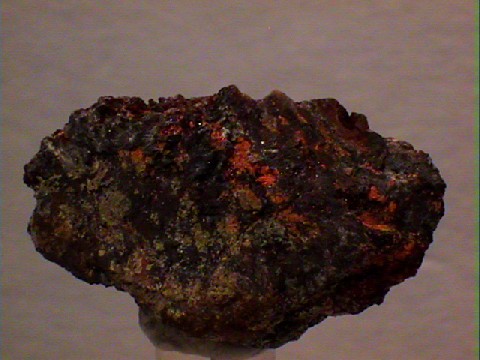 THE MINERAL MASSICOT
THE MINERAL MASSICOT
- Chemical Formula: PbO, Lead Oxide
- Class: Oxides and Hydroxides
- Uses: As a minor ore of lead, a pigment and as mineral specimens.
Specimens
Massicot is the
orthorhombic variety of
PbO.
The tetragonal variety is the mineral
PHYSICAL CHARACTERISTICS:
- Color is yellow to reddish yellow due to minium inclusions.
- Luster is greasy, earthy to dull.
- Transparency: Crystals are generally opaque, but thin scales can be transparent.
- Crystal System is orthorhombic; 2 2 2.
- Crystal Habits include massive, earthy and scaly coatings on other lead minerals.
- Cleavage is distinct in two perpendicular directions, but is rarely seen.
- Fracture is uneven.
- Hardness is 2.
- Specific Gravity is 9.6 - 9.7 (Well above average for any mineral)
- Streak is light yellow.
- Associated Minerals include minium, galena, barite, wulfenite, pyromorphite, mimetite, bindheimite, cerussite, lead and sphalerite.
- Notable Occurrences include Freiberg,
Saxony , Germany as well as in Inyo County, California; at the Dogwater Mine, Graham County; Tonopah-Belmont Mine, Maricopa County and Cababi District, Arizona; Potosi, Missouri and at Leadville, Colorado, USA; Sardinia, Italy; Mexico; Hungary; and atLavrion , Greece.




